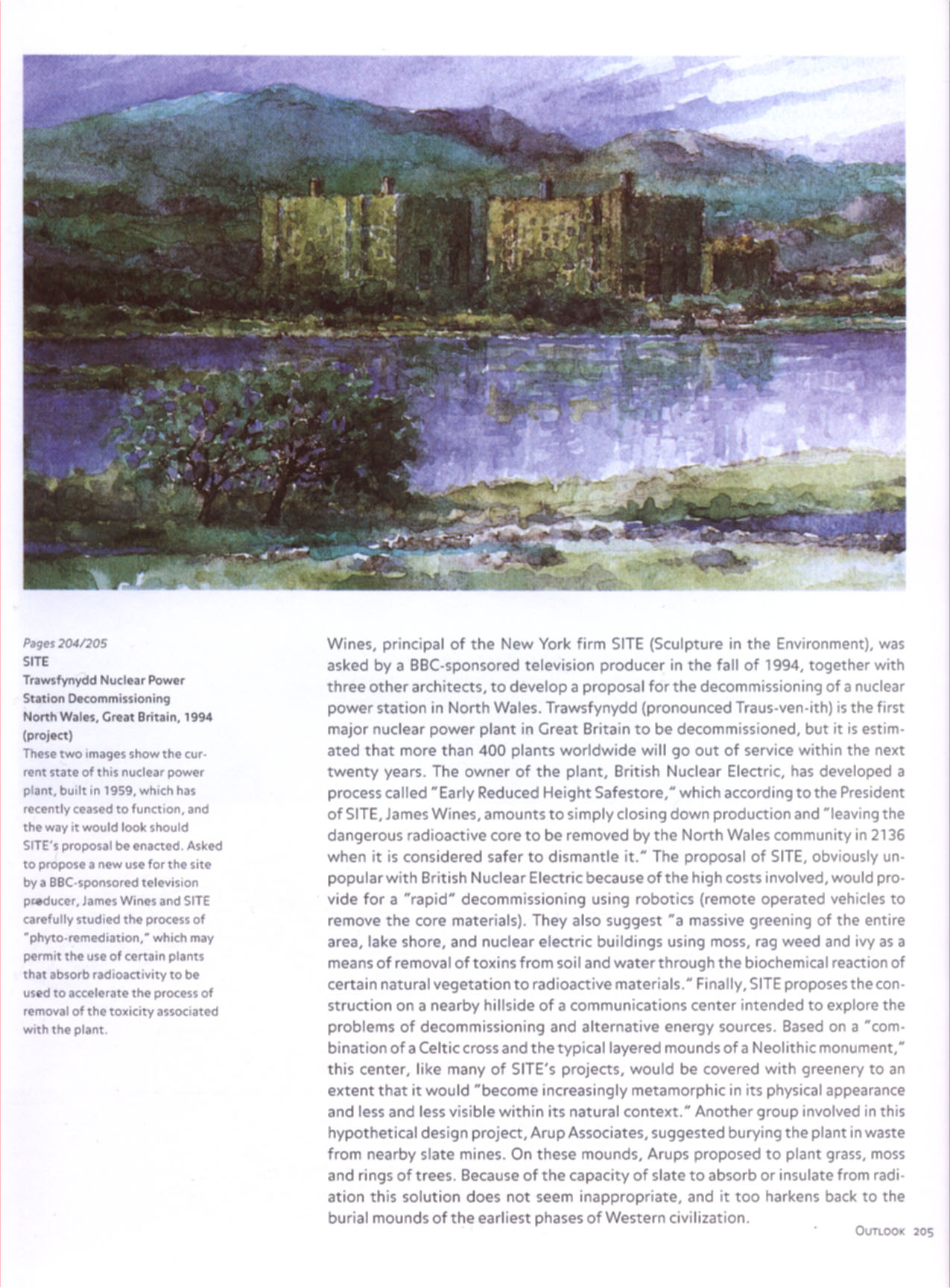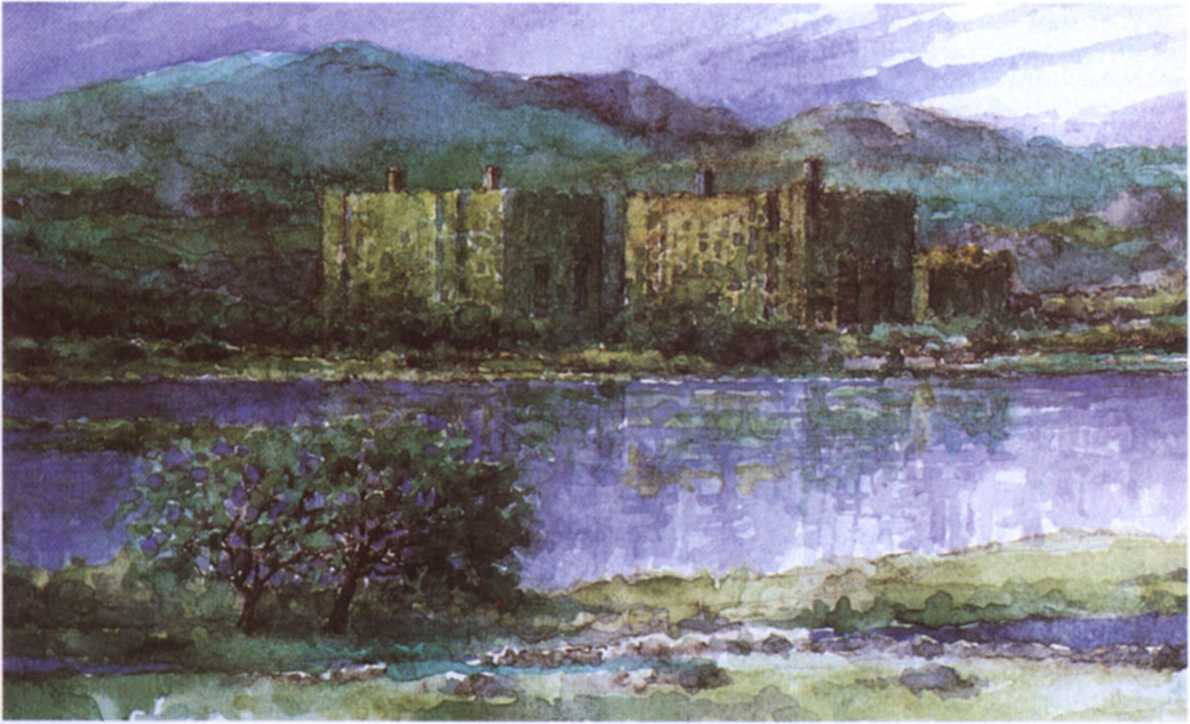New Forms Taschen 194


P»ges 204/705 SITE
Trawsfynydd Nuclear Power Station Decommissioning North Wales, Great Britain, 1994 (project)
These two images show the cur-rent State of this nuclear power plant, built in 1959, which has recently ceased to function. and the way it would look should SITE's proposal be enacted. Asked to propose a new usc for the site by a BBC-sponsored televi$ion preducer, James Wincs and SITE carefully studied the process of "phyto-remediation,* which may permit the use of certain plants that absorb radioactivity to be used to accelerate the process of removal of the toxicity associated with the plant.
Wines, principal of the New York firm SITE (Sculpture in the Environment), was asked by a BBC-sponsored television producer in the fali of 1994, together with three other architects, to develop a proposal for the decommissioning of a nuclear power station in North Wales. Trawsfynydd (pronounced Traus-ven-ith) is the first major nuclear power plant in Great Britain to be decommissioned, but it is estim-ated that morę than 400 plants worldwide will go out of service within the next twenty years. The owner of the plant, British Nuclear Electric, has developed a process called "Early Reduced Height Safestore," which according to the President of SITE. James Wines, amounts to simply closing down production and "leaving the dangerous radioactive core to be removed by the North Wales community in 2136 when it is considered safer to dismantle it." The proposal of SITE, obviously un-popular with British Nuclear Electric because of the high costs involved, would pro-vide for a "rapid" decommissioning using robotics (remote operated vehicles to remove the core materials). They also suggest "a massive greening of the entire area, lakę shore, and nuclear electric buildings using moss, rag weed and ivy as a means of removal of toxins from soil and water through the biochemical reaaion of certain natural vegetation to radioactive materials." Finally, SITE proposes the eon-struction on a nearby hillside of a Communications center intended to explore the problems of decommissioning and alternative energy sources. Based on a "com-bination of a Celtic cross and the typical layered mounds of a Neolithic monument," this center, like many of SITE's projects, would be covered with greenery to an extent that it would "become increasingly metamorphic in its physical appearance and less and less visible within its natural context." Another group involved in this hypothetical design project, Arup Associates, suggested burying the plant in waste from nearby siatę mines. On these mounds, Arups proposed to plant grass, moss and rings of trees. Because of the capacity of siatę to absorb or insulate from radi-ation this solution does not seem inappropriate, and it too harkens back to the burial mounds of the earliest phases of Western civilization.
Outlook 205
Wyszukiwarka
Podobne podstrony:
New Forms Taschen 195 Pages 206/207 SITE Trawsfynydd Nuclear Power Station Decommissioning Nort
New Forms Taschen 112 P» ges 120/121 Mario Bona £vry Cathcdral £vry. Franca, 1988-95 located just so
New Forms Taschen 171 Pi ges 182/183 Tadao Ando Meditation Spać*. UNESCO Pan*, Franca, 1994-95 This
32389 New Forms Taschen 069 Pa ges 74/7S Hodgetts ♦ Fung Towell Temporary Library, UCLA Lo
New Forms Taschen 056 Pages 60/61 Santiago Calatrava lyon-Satolas Railway Station Lyon, Fr
New Forms Taschen 190 Samitaur in Culver City challenges the use of urban space in a slightly differ
więcej podobnych podstron